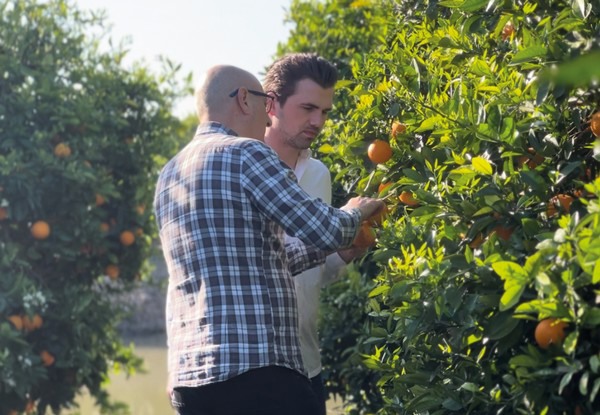Spring was a long time coming in the Netherlands, but the somewhat grayer weather was good for citrus sales, says Gijsbert van Leeuwen, responsible for procurement at Olympic Fruit. "It wasn't really strawberry weather. Citrus, on the other hand - also because there was less supply from Spain - had a good season," he begins, adding that that created a virtually empty market at the start of the South African citrus season.
There was, for example, a significant mandarin shortage across Europe in early May, Gijsbert points out. "Spain was ready about seven weeks earlier than last year, and Morocco had a smaller harvest too. So the South African mandarins entered a completely empty market. That's perfect to come in with your product. The grapefruit situation is similar. There was even a supply gap when Spanish grapefruit exports stopped earlier than usual, and the supply from South Africa hadn’t yet begun. The South Africans thus started harvesting and exporting about three weeks earlier."
 Gijsbert van Leeuwen, inspecting some oranges.
Gijsbert van Leeuwen, inspecting some oranges.
In balance
That affects prices, something you must monitor closely, Gijsbert admits. "If prices are good somewhere, everyone pouches on them. When the market's good and the outlook's positive, importers demand fruit, and exporters send it. As a result, too much is sometimes sent, which then restabilizes prices and could lead to an oversupply. Everything must balance out well. We try to connect the right supplier and customer, thus building a transparent chain," he says.
For the rest of the South African citrus season, Gijsbert expects a stable, rather uneventful market. However, he does foresee increased competition. "There should be enough alternative products, like stone and soft fruit, available this year. These and citrus all compete for the same spot on shelves, in brochures, and ultimately consumers' baskets. I, thus, think citrus demand will be normal."
Market dynamic
Gijsbert also sees programs increasingly meeting market demand. "Both retailers and growers drive that development. In South Africa, for instance, there's plenty of consolidation. Growers are increasingly growing in size and want security," he explains, adding that the increased number of programs is a good thing. "But, good market dynamics is about balance. Part spot market, part program, and part weekly trade determine price changes. Those elements, together, in the right proportions, reflect the market's reality."
Regardless of the market approaches, it all ultimately hinges on consumer needs, says Van Leeuwen. So, it is important that all chain parties - customer, importer, exporter, grower, and breeder - share information. Although that mapping process is ongoing, Olympic Fruit knows shoppers deem flavor vital. "For example, consumption increases again as soon as we start with Nadorcott mandarins," he continues.
Communication offers chances
Besides good flavor and quality, Gijsbert sees chances for communication. "Almost everyone knows about, say, mandarins, though very few are aware of the different varieties throughout the year. For example, Nadorcotts typically taste sweeter and have a different texture than other Clementine varieties. Plus, everyone has specific taste preferences. We can help people make the right choice by communicating more about the different varieties. And that, in turn, will help long-term segment growth."
There are challenges too. For instance, mandarin supplies skyrocket in the summer, while citrus demand is low. "How will we, and our South African growers, market those mandarins in the best possible way? That's challenging. Sometimes there's a huge oversupply, at others, shortages. We're considering things like other markets and other ways of offering or consuming them, such as mandarin juice or beer," Gijsbert says.
Lower on the export list
Cold treatment still impacts South African exports. "After the 2022 transition year, controls were tightened. That is and will remain a challenge. South African citrus stays in port longer, pushing up costs." That is not the biggest challenge, though, says Gijsbert. "Those stricter controls make it more difficult for South African growers to export to Europe, putting that destination lower on their export list."
"So, I expect the supply to have more ups and downs, and only when volumes peak will product be sent to Europe. At the beginning of the season, when volumes are still somewhat smaller, the South Africans will seek easier markets. Europe must compete at the world market level and South African exporters factor in price and trade barriers. Cold treatment is an additional hurdle," Gijsbert concludes.
For more information:
Gijsbert van Leeuwen
Olympic Fruit
Handelscentrum ZHZ 40a
2991 LD Barendrecht
Tel: +31 (0)180 646 210
[email protected]
www.olympicfruit.com
